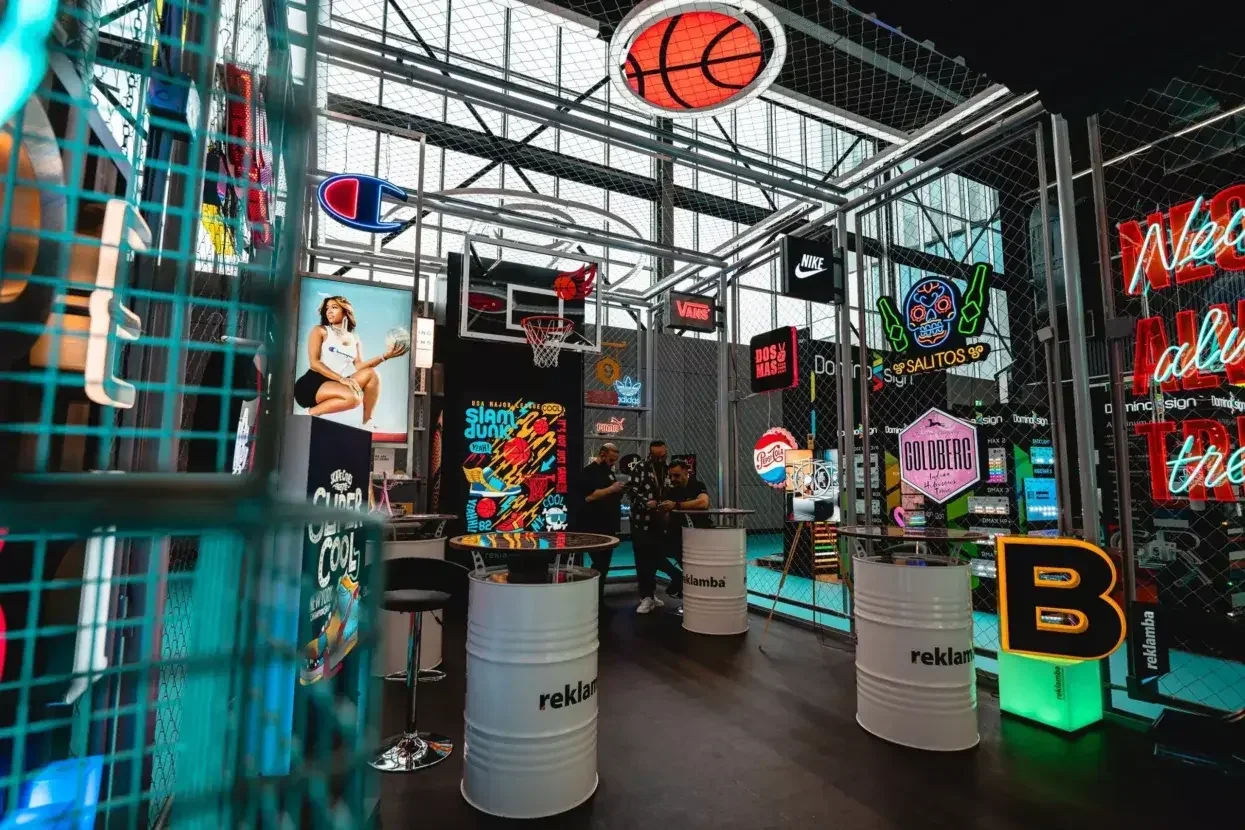
The European Sign Expo 2024 that took place in March in Amsterdam has demonstrated once again, the popularity of non-printed signage. Today, there are numerous types of non-printed signage avaialble that feature suitable technology for every purpose. Sonja Angerer shares a few of the most popular and used types of non-printed signage.
Each shopping mall is an exhibition space for modern advertising technology. For a long time, this has not only included print applications, but increasingly included non-printed signage.
Examples include:
- Digital Signage
- Audio, light and color changes
- Neon / LED
- Laser-cut / milled signs
- Inflateables.
Today, neon installations have largely been replaced by LED signage.
Image credit: S. Angerer
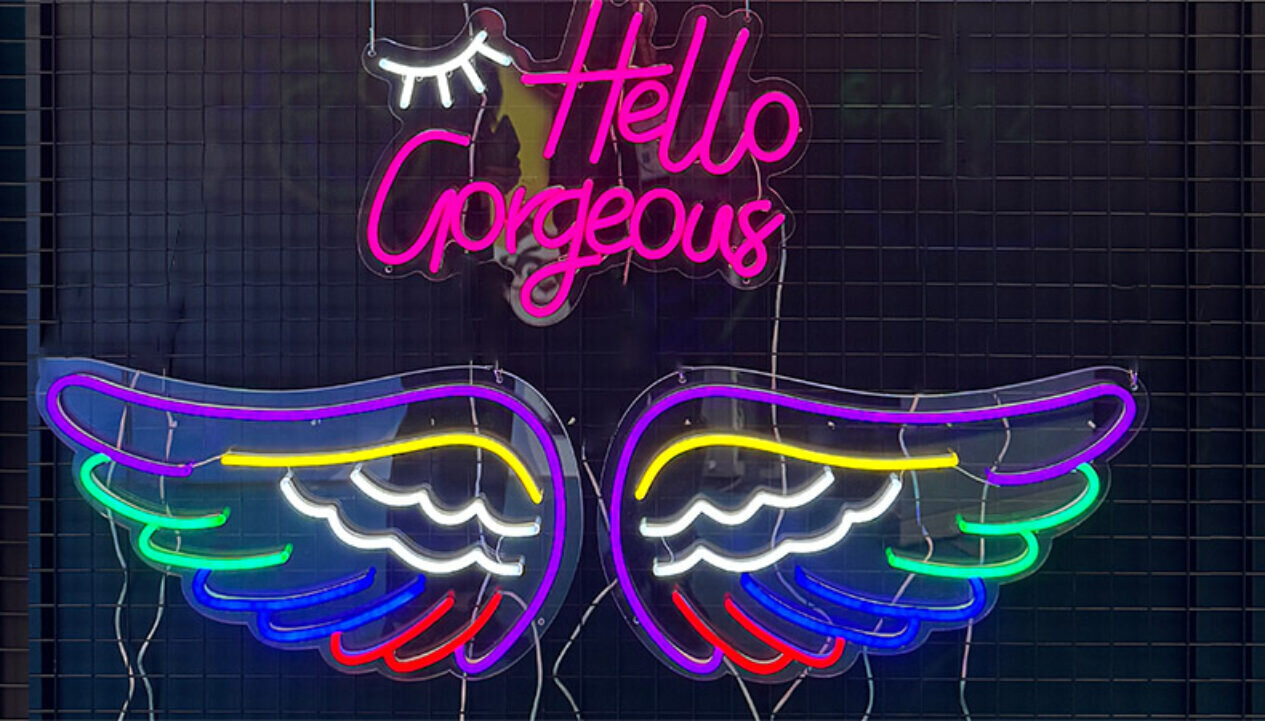
The rise of Digital Content
In recent years, digital signage has become the biggest competitor to printed advertising. LCD and LED screens are mainly used indoors, and are suitable for short viewing distances. Interactive displays, equipped with touch screens or input buttons, serve as effective information kiosk. In Europe, Samsung and LG are the market leaders in Digital Signage screens.
A special feature within digital signage are LED video walls. They are often found at major events such as concerts or sports. The image consists of red, green, and blue LEDs. The diodes are up to 25 mm apart. This results in very bright displays, but not necessarily a very high resolution image. Therefore, they are best suited to be viewed from a long distance. A well-known supplier of video wall modules is Highlite.
Digital content can also be presented through projection. The projectors used for this purpose are usually permanently installed. They achieve a very high brightness of up to 20,000 lumens. Therefore, they can be used both indoors and outdoors. Regarding projectors, Epson has been the world market leader for decades.
Holograms can also be considered as non-printed signage. However, they are rather elaborate and expensive, and are therefore mostly used in museums or other well-protected interiors.
Light and colour changes can also be used for communication.
Image credit: S. Angerer
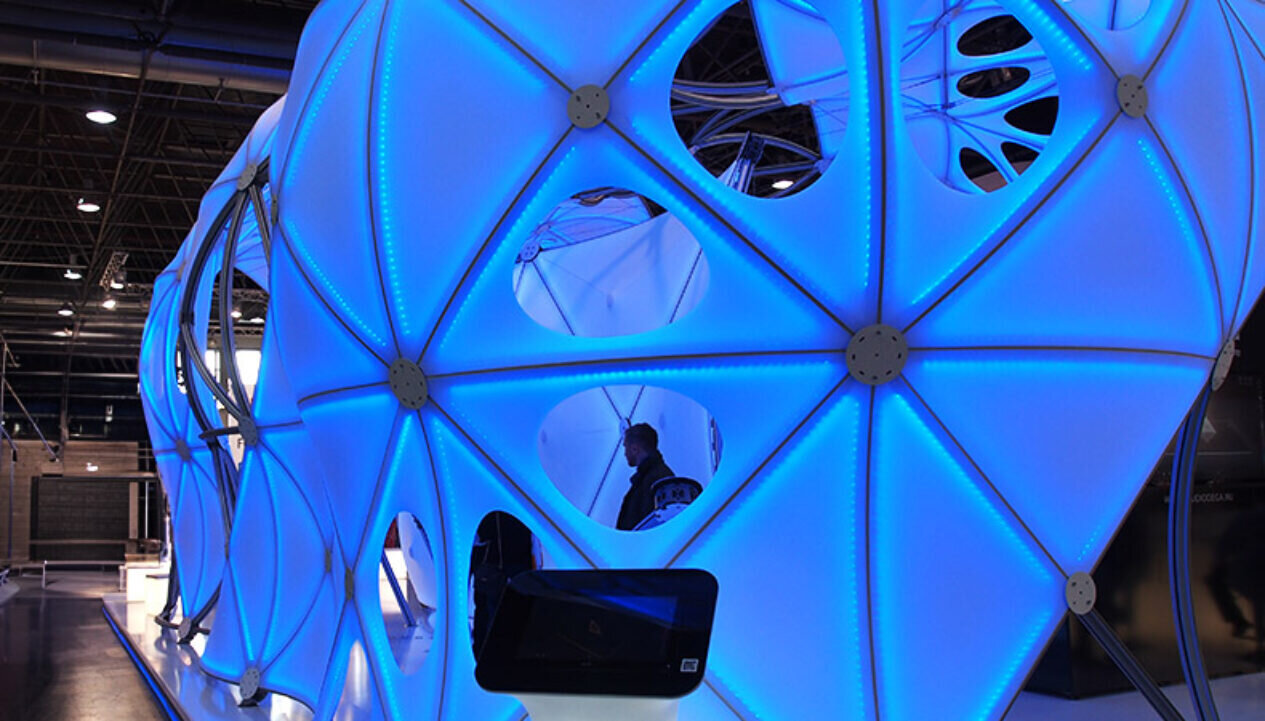
Audio, light, and colour change for navigating and advertising
It is not necessary for advertising and signage to always need text and images. Non-printed advertising may also include announcements and radio spots. These can be produced on-site or commissioned from local and national studios and stations. Recently, freely accessible AI tools have been introduced, e.g. from Cyberlink, which can read out texts in a professional way.
You can also appeal to customers and passers-by by using strategic lighting accents and colour changes in lighting. Light installations and illuminations are usually planned and carried out by specialised companies.
Classic signage without printing: profile letters.
Image credit: S. Angerer
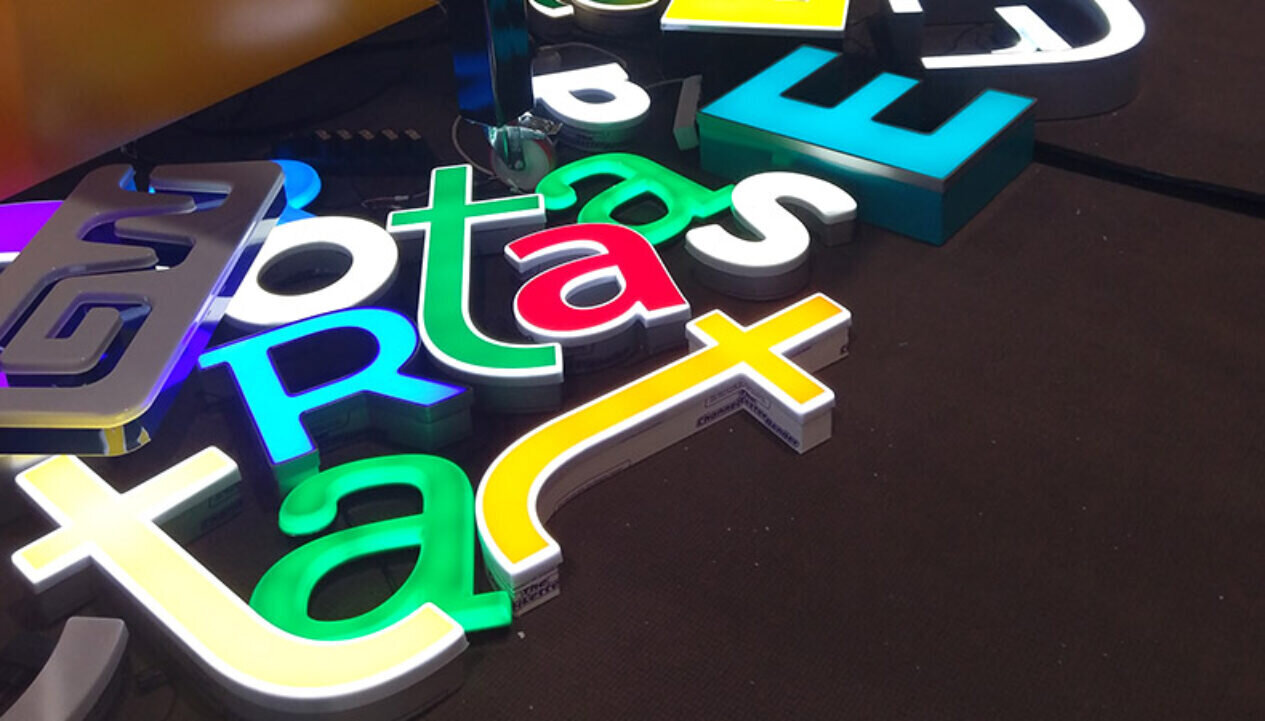
Neon & LED Signage
Neon light is one of the most used methods of outdoor advertising. However, in recent years, most systems have been converted to significantly more energy-efficient LED technology. Advances in 3D printing and smaller LED modules have simplified the production of intricate designs. As a result, even complex designs are no longer a problem. 3D printers like Big Rep or Massivite are suitable for the production of profile letters offer.
LEDs are also used for single or multi-colour text displays. They are avaialble in many colours and sizes. In most cases, this non-printed signage is controlled locally via a computer using Wi-Fi or Ethernet. Occasionally also via a USB stick. LED tickers are available from a variety of vendors, even on Ebay.
Laser-cut and milled signage usually comes in one or two colours.
Image credit: S. Angerer
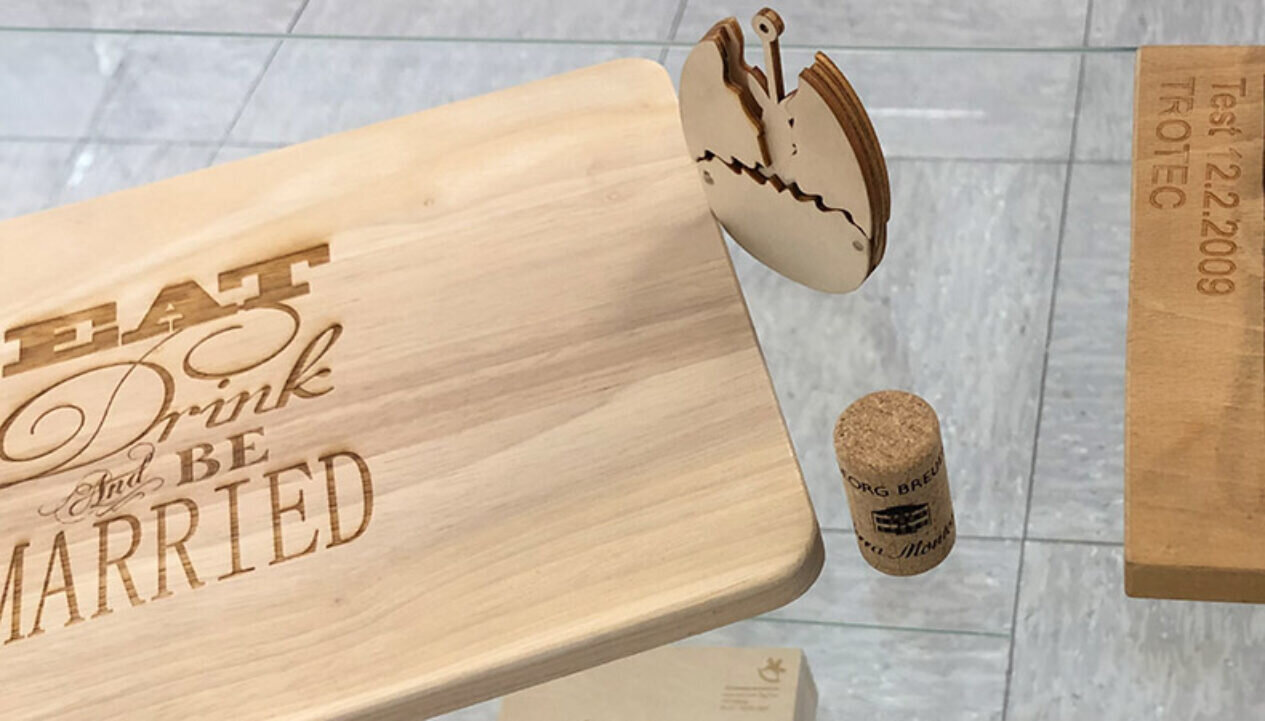
Milled Signage
Milled and laser-cut signage does not require any print. However, just like with printed advertising, they utilise text and graphic motifs, although these are usually kept relatively simple. That’s because you cannot print photo grade graphics with lasers or milling machines. However, multi-coloured signage can also be achieved with multi-layer engraving or laser materials as well as additional varnishing or wrapping. Milling, laser, and combination devices are available, for example, from Trotec and Eurolaser. Digital cutting table, for example from Zünd, can be outfitted with milling and engraving tools.
Milled and laser-cut signage made of plastic, metal or wood is very durable and is therefore mainly used for permanent applications. Acrylic signage can also be illuminated from the back or side for even more distinctive effects.
Inflatables as non-printed signage
Inflatables, i.e. inflatable advertising objects and figures, can also be considered non-printed signage as they are primarily made of pre-coloured TPU or PVC films. There are simple inflatables that, once filled, do not require any additional air supply. However, most constructions include an air blower.
Inflatable advertising media are almost always crafted on-demand as a single piece or small series. They can be designed for both indoor and outdoor use. This requires a vast amount of specialist knowledge, which is why specialist companies in particular offer inflatables.
Non-Printed Signage: A Market for Printers?
For printers with a history in sign making, non-printed signage is part of their daily business. Often, it is difficult to clearly distinguish between printed and non-printed signage. For example, a digital direct printing sign may be engraved as a second step. The combination of backlit textile printing and digital signage is also common today.
For printers who have not yet had any experience with illuminated advertising and sign making, non-printed signage without printing can also be a worthwhile field in the future. However, they will have to invest in additional skilled workers to do so. This is especially true for advertising installations with electrical wiring to ensure safety.